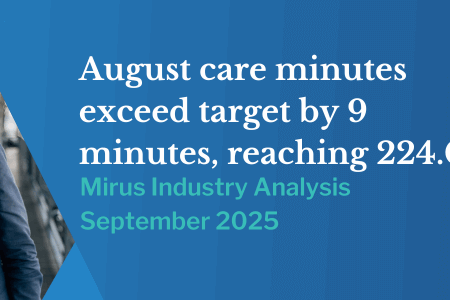The major aged care trends to look out for this year
March 10, 2015 | Aged Care Management
While some industries in Australia are in decline, aged care is one that is showing no sign of slowing down.
This year is likely only going to be the beginning, however, as the industry continues to evolve, and is shaped by rising resident demand. Providers that stand prepared, both financially and in terms of facilities and staff, will be in the best possible position to deliver the necessary levels of care.
With the elderly population impacting both healthcare and aged care facilities, it's important that those involved in the sector are aware of the major trends. This article will take a look at several major trends in the sector that will likely be seen this year.
Demand for residential care
While residential aged care facilities offer a high level of 24/7 care, they're starting to fill up. The demand for high care residential services means elderly Australians are starting to seek out the facilities in growing numbers.
A report from Korda Mentha released at the end of last year noted that while reforms such as Living Longer, Living Better are starting to direct funding to community care programs, demand will for higher care will mean a need for residential facilities.
In turn, this will result in a focus on in-home care, which is also set to grow.
In-home care growth
The alternative option for elderly Australians, in-home care allows for more independence than residential facilities at the expense of constant monitoring. Corrs outlined in a report that care packages are growing at 13 per cent per annum, given the cost-effectiveness, demand by patients to remain within the home and advances in remote care technology.
Health service integration
Quay Communications explained in a similar report that many aged care centres currently integrate other health services like pharmacies and basic medical practices, likely based on demand from residents. As facilities continue to grow, it's expected that this trend will accelerate as a way of providing the necessary levels of care for the elderly.
Taking opportunities overseas
International collaboration is key to the aged care sector, and it could certainly play a key role over the next few years. The Japanese PALRO aid robot, for example, has already been trialled in Japanese aged care facilities to great success, and it could prove useful in Australia.
Corrs outlined how opportunities could lie with China in the near future, with Australian providers able to take their expertise and apply it to foreign markets. Given the announcement of a Free Trade Agreement between the two nations, Australian providers can actually set up shop in the country.
"Australian operators have the expertise to assist with the design and construction of aged care homes and retirement villages, train staff and ultimately manage and operate the facilities," the firm noted.
It also noted that there could be signs of foreign capital investment from countries such as Singapore, which isn't altogether surprising given the growth in the Australian sector.
The future of Australian aged care
The aged sector is on a significant growth path, and developments are only likely to continue accelerating over the next few years. Providers and those involved in the sector will stand a far better chance of remaining viable if they're aware of the major trends in the industry.
It's also important to take advantage of the right tools, especially with regards to financial management. Tools like the ACFI Calculator allow facility managers and ACFI coordinators to simplify complex data.
What do you think are the biggest opportunities for success in the aged care industry today? Please contact us and let us know!


